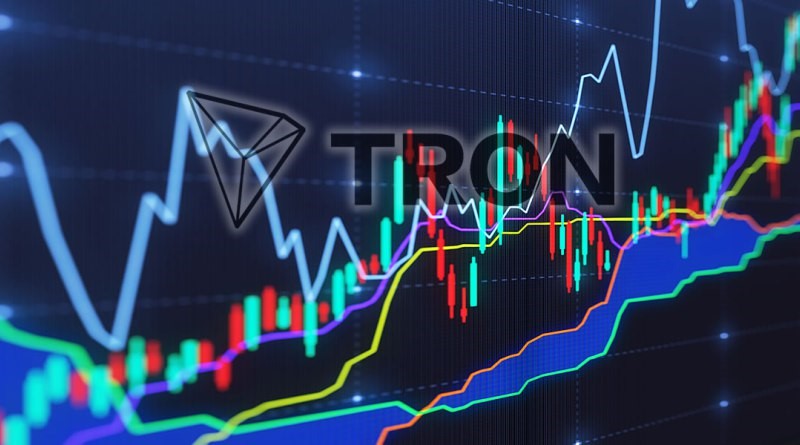FBI arrests Nigerian ‘tech queen’ Sapphire Egemasi in $1.3M heist targeting U.S. government
06/05/2025 - Updated On 06/17/2025
TRON daily transactions soared by 29% in the second quarter of 2024, placing it just behind leading blockchain networks like Ethereum and Solana. This surge underscores TRON’s increasing relevance within the blockchain ecosystem and signals the network’s potential to challenge more established players like Ethereum and Solana.
In addition to the rise in TRON daily transactions, the quarter also saw a significant 31% rise in daily active addresses, reflecting a growing user base and increasing engagement on the network. This surge suggests that more users are turning to TRON for their blockchain needs, further solidifying its position in the market.
However, despite these positive developments, TRON faced a 23% decline in its total value locked (TVL) during the same period. This drop in TVL, which measures the total assets held within TRON’s DeFi ecosystem, indicates potential challenges in retaining capital or competition from other platforms.
Despite the decline, TRON still ranks as the second-largest network by total value locked (TVL). Key platforms like JustLend and JustStables are the leading protocols within TRON’s ecosystem, making substantial contributions to its TVL. According to DefiLlama, TRON’s TVL currently stands at around $7.83 billion.
Alongside the surge in TRON daily transactions, the report reveals an impressive financial performance for the network. TRON’s total revenue for the second quarter reached a substantial $117.5 million, placing it just behind blockchain heavyweights Ethereum and Solana. This revenue reflects the network’s growing transaction volume and expanding user base.

The report also highlights a 31% increase in daily active addresses, which complements the rise in TRON daily transactions. This growth in active addresses further reinforces the network’s position as a significant player in the blockchain space.
Despite this decline, TRON remains the second-largest network in terms of TVL. This resilience is largely due to the contributions of key protocols such as JustLend and JustStables, which continue to play a pivotal role in maintaining the network’s DeFi ecosystem. According to data from DefiLlama, TRON’s TVL stood at approximately $7.83 billion at the time of writing. TRON Daily Transactions and Active Addresses. Source: Messari
One of TRON’s most compelling features is its deflationary nature, a rarity among Layer-1 blockchains. During Q2 2024, the circulating supply of TRX, TRON’s native token, decreased from 88.2 billion to 87.7 billion, translating to an annualized inflation rate of -2.4%. This deflationary model not only adds intrinsic value to TRX but also positions TRON as a long-term contender in the competitive blockchain landscape.
“TRON’s deflationary model is a powerful and unique feature among Layer 1 blockchains. By reducing the supply of TRX, the network not only enhances the value of the token but also reinforces its appeal as a long-term investment,” Pellicer explained.
This reduction in supply is particularly noteworthy as it reflects TRON’s strategic focus on long-term value creation, a critical aspect in an industry where inflationary pressures can undermine token value. The decrease in circulating TRX highlights TRON’s commitment to maintaining a healthy and sustainable ecosystem for its users and developers. TRON daily transactions jumped by 29% in Q2 2024, highlighting its growing adoption in the blockchain space
TRON has also emerged as a dominant force in the stablecoin market. The network’s total stablecoin market capitalization is nearing an impressive $62 billion, with over 48 million holders. This dominance is largely driven by the success of USDT (Tether) on the TRON network. By the end of Q2 2024, the market capitalization of USDT on TRON had reached $57.1 billion, marking a 10% increase from the previous quarter.

“Approximately 53% of all USDT in circulation is on TRON, maintaining a stable share quarter-over-quarter,” Messari analysts noted in their report. This statistic underscores TRON’s critical role in the global stablecoin market, as more than half of the world’s USDT is transacted on its network.
The rise in TRON daily transactions is inextricably linked to the network’s growing dominance in stablecoin transactions. As stablecoins continue to gain traction as a preferred medium of exchange in the crypto space, TRON’s infrastructure appears well-positioned to capitalize on this trend.
As TRON continues to enhance its infrastructure, including plans to integrate Bitcoin layer-2 (L2) solutions and eliminate gas fees, the network’s appeal is poised to grow even further. These developments are expected to drive a continued increase in TRON daily transactions, as more users and developers flock to the network.
However, TRON’s future success will hinge on its ability to innovate and expand its DeFi ecosystem. With competition from other Layer-1 networks intensifying, TRON must focus on scalability and interoperability to attract a broader audience.
“TRON must prioritize scalability and interoperability to stay competitive in the evolving blockchain landscape. The network’s ability to adapt and innovate will be crucial to its long-term success,” Pellicer concluded.
TRON’s performance in Q2 2024, marked by a 29% surge in TRON daily transactions, underscores the network’s growing adoption and resilience in the face of challenges. As TRON continues to evolve, its ability to balance growth with innovation will determine its place in the future of blockchain technology. The Bit Gazette has the latest crypto news and expert analysis.
Chinyere Onuoha is a seasoned crypto journalist and content writer with a robust background in Accounting. She has effectively combined her financial expertise with her passion for digital marketing and content creation. Her unique skill set allows her to craft insightful and accurate articles that resonate within the crypto community. As a digital marketer and content writer, she excels at breaking down complex concepts into engaging and informative content, making her a trusted voice in the rapidly evolving world of cryptocurrency journalism